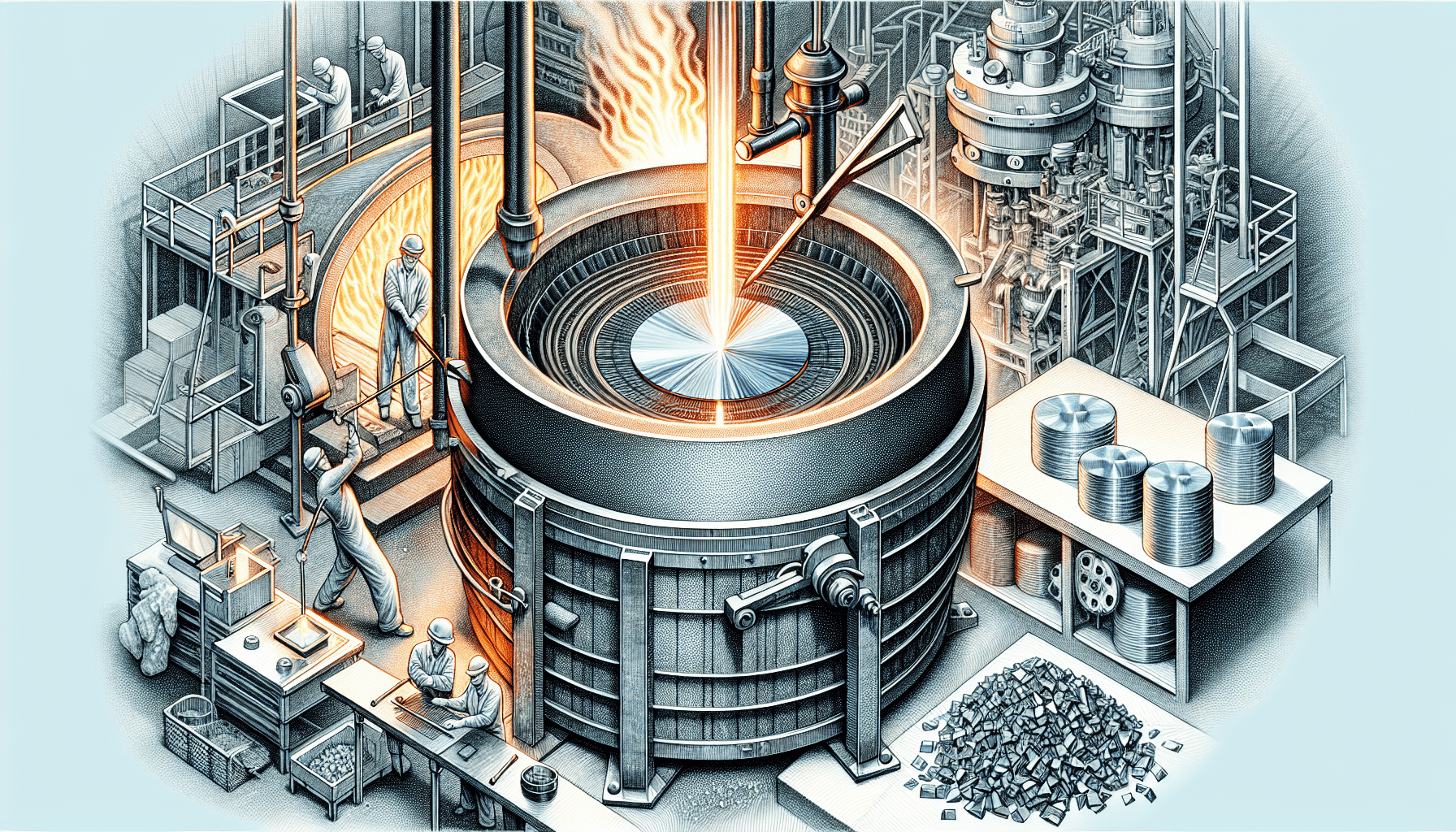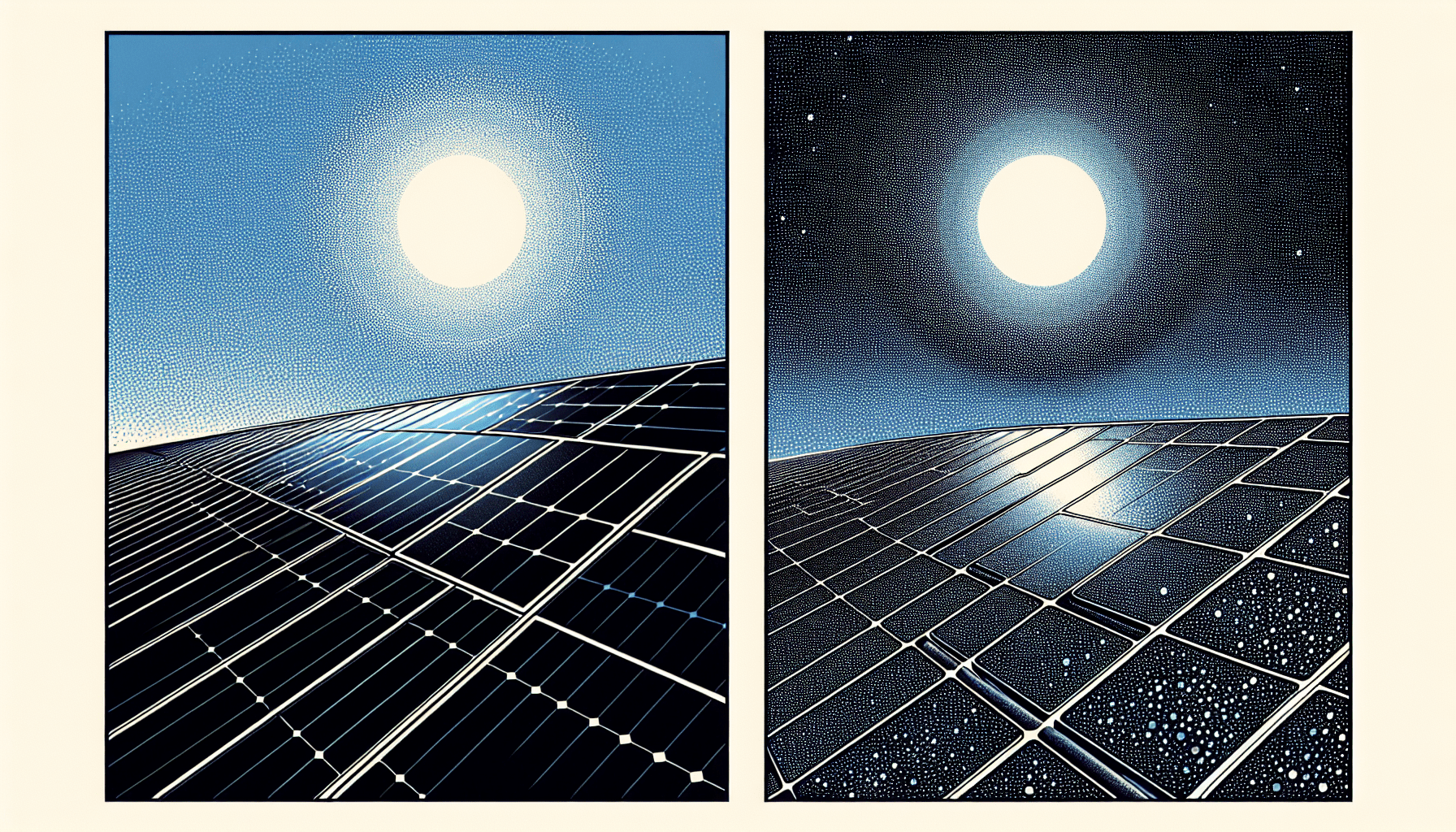Deciding between black vs blue solar panels hinges on more than color; it involves contrasting efficiency, cost, and design suited to your home. Black panels, with their monocrystalline cells, often lead in efficiency, while blue polycrystalline panels may better fit limited budgets. We explore these two dominant solar panel types side by side, cutting through the complexity to empower your choice—without the fluff.
Key Takeaways
- Black solar panels, using monocrystalline technology, are more efficient (18-23% range) but come with a higher upfront cost due to the complex Czochralski manufacturing process that results in significant silicon waste.
- Blue solar panels employ polycrystalline technology, offer lower efficiency compared to black panels, but are more cost-effective to produce, and thus are sold at a lower price, making them appealing for budget-conscious consumers.
- Choosing between black and blue solar panels requires balancing considerations of efficiency, aesthetics, cost, and individual energy needs, with black panels providing greater long-term savings despite higher initial costs, and blue panels offering a cost-efficient entry point into solar energy.
Black Solar Panels: Monocrystalline Technology

Black solar panels, renowned for their monocrystalline technology, are a symbol of premium quality and efficiency in the solar industry. These black beauties are not just a statement of style; they are the epitome of high performance, thanks to their monocrystalline solar cells that promise superior energy conversion. However, the elegance and effectiveness of black solar panels come with a higher price tag, a testament to the sophisticated manufacturing process and the meticulous crafting of these dark marvels.
Manufacturing Process
Black monocrystalline wonders are created through the intricate and precise Czochralski process. Here, large silicon crystals are coaxed into existence, one careful step at a time, resulting in wafers of unmatched purity. Yet, this meticulous process is not without its consequences, as it leads to significant silicon waste and contributes to the higher cost of these solar panels.
Appearance and Aesthetics
With regal uniformity, black solar panels, sleek and seamless, are ideally suited for the rooftops of discerning homeowners. With black backsheets that enhance their aesthetic value, these panels offer a sophisticated look that seamlessly blends with various architectural styles, making them a popular choice for residential installations.
Efficiency and Output
Black solar panels dominate the realm of solar efficiency, impressively boasting a range of 18-23%. Their monocrystalline silicon allows for a more effective conversion of sunlight to electricity, particularly in low light conditions—ensuring that even the most overcast days contribute to your energy savings.
Cost Considerations
Black solar panels, sophisticated and beautiful, come with a premium price tag. The complex production process, characterized by potential silicon waste, translates into a higher upfront cost. However, the long-term benefits of their higher efficiency can offset this initial investment, leading to significant energy cost savings over time.
Blue Solar Panels: Polycrystalline Technology

Offering a more accessible entry point into the world of solar power, blue solar panels are distinct for their polycrystalline technology. Crafted from silicon, the earth’s second most abundant element, these panels are a mosaic of silicon crystals that lend them their signature blue hue. While they may not boast the same efficiency as their black counterparts, their cost-effective nature and unique appearance make them an appealing choice for many.
Manufacturing Process
Blue solar panels are made by melting silicon crystals and pouring them into square molds to cool. This process forms wafers with a speckled, shimmering appearance that is as functional as it is distinctive. In fact, each blue solar panel, which contains a solar cell, not only adds an aesthetic touch but also contributes to efficient energy production with solar panels blue technology.
Simpler and more cost-effective than the process for black panels, the manufacturing of blue polycrystalline panels results in a product that balances cost and performance. In contrast, monocrystalline panels offer higher efficiency but at a higher price point.
Appearance and Aesthetics
Blue solar panels, a kaleidoscope of silicon fragments, dance in the light with their speckled surface. This distinctive appearance, coupled with the anti-reflective coating that enhances light absorption, gives them a unique aesthetic that can be both captivating and polarizing.
While some may find their appearance less refined than the sleek black panels, others are charmed by their distinctive ‘metal flake effect’.
Efficiency and Output
With efficiency rates typically lower than black panels, blue solar panels are considered modest performers. However, their lower efficiency is counterbalanced by their affordability, making them a popular pick for those looking to save on initial costs without sacrificing the dream of a solar-powered future.
Cost Considerations
Polycrystalline solar panels, distinct for their blue hue, are also a symbol of cost-efficiency. The production process of polycrystalline solar cells is less wasteful and requires less energy, resulting in a lower price tag. This affordability makes blue solar panels an attractive option for budget-conscious buyers looking to embrace renewable energy.
Comparing Black and Blue Solar Panels: Key Factors to Consider
More than a choice of color, the solar spectrum poses a conundrum of efficiency, aesthetics, and cost. When weighing the merits of black vs blue solar panels, it’s essential to reflect on your individual energy needs, your design preferences, and your budget. Each type of panel has its own set of trade-offs, and understanding these can guide you to the solar solution that best fits your unique situation.
Efficiency Comparison
Black solar panels lead the quest for efficiency. Their advantages include:
- Monocrystalline structure, allowing them to generate more electricity from the same amount of sunlight than blue panels
- Latest advancements in black panel technology, further bolstering their performance across various conditions
- Longer lifespan
- Promise of sustained energy production
Aesthetic Appeal

Just as beauty is in the eye of the beholder, so it goes for solar panels. The sleek, uniform look of black panels offers a modern aesthetic that many homeowners desire. However, the distinctive blue hue and speckled pattern of blue panels hold their own charm. Ultimately, the decision may come down to personal preference and how the panels complement your home’s design.
Cost Comparison
Apart from efficiency and aesthetics, cost is a practical consideration. Some factors to consider when it comes to cost include:
- Black solar panels command a higher price tag initially
- They require fewer panels to produce the same amount of energy
- This potentially offers higher returns over time.
Blue panels, on the other hand, present an opportunity for a lower initial investment, appealing to those keen on minimizing upfront costs while still tapping into the benefits of solar technology.
Choosing the Right Solar Panel for Your Needs
To embark on the solar journey, careful evaluation of your unique energy needs, financial capacity, and installation practicalities is necessary. Whether you gravitate towards the high-efficiency allure of black panels or the budget-friendly charm of blue panels, the key is to align your choice with your energy goals and your home’s characteristics.
For a smooth transition to solar, engage with experts such as those at Artisan Electric who can navigate the intricacies of solar installations and guide you towards the right solar panels for your needs.
Assessing Your Energy Needs
Begin tailoring your solar solution by assessing your household’s energy consumption. Calculate your average usage and identify peak electricity demands to determine the solar panel system size that will meet your needs.
Tools like the PVWatts calculator can provide an estimation of the energy production required, ensuring that your solar array generates enough energy to power your daily life.
Budget Considerations
While the upfront investment for solar panel installation is significant, considering the long-term savings that different solar panel types offer is crucial. Black panels may have a higher initial cost, but their superior efficiency and potential for long-term energy savings can make them a wise financial decision in the long run.
Installation Requirements
Homeowners delving into the practicalities of solar installation must consider factors such as their roof’s condition, sun exposure, and any local regulations that could affect the installation process. From grid-connected systems to off-grid setups, the type of solar installation you choose must be compatible with your home’s infrastructure and energy needs.
Discussing your options with a seasoned installer like Artisan Electric can ensure that your solar panels are optimally placed and professionally installed for maximum efficiency.
Artisan Electric’s Expertise in Solar Panel Installation
Artisan Electric, based in Seattle, brings unparalleled expertise and a commitment to sustainable practices to the world of solar panel installation, making us a standout choice. Known for our full-service turn-key approach, we specialize in transforming properties with efficient, cost-effective solar solutions.
Our team of licensed electricians and installation experts uphold the highest standards in the industry, ensuring that every project meets rigorous quality and performance benchmarks.
Full-Service Turn-Key Approach
Providing a comprehensive solar installation experience is a source of pride for Artisan Electric. From the preliminary assessment of your roof’s suitability to the careful selection of panels to match your energy needs, we manage every aspect of the process.
Our commitment extends beyond installation, offering a year of complimentary check-ups and support, guaranteeing that your solar system performs at its peak.
Warranty and Quality Assurance
Artisan Electric ensures long-lasting quality when you invest in solar with them. We offer extensive warranties, including up to 30 years for the solar panels and a 25-year production guarantee. Moreover, our craftsmanship is backed by a 25-year warranty, giving you peace of mind that you’re choosing a company that stands firmly behind its work.
Additional Services – Why choose Artisan Electric?
Artisan Electric offers a range of electrical services, extending our expertise beyond solar installations. Whether it’s commercial lighting retrofits, residential wiring upgrades, or the installation of over 250 EV chargers, including Certified Tesla EV charger installations, our team is equipped to enhance your property’s electrical infrastructure.
Summary
As we reach the horizon of our solar exploration, the choice between black vs blue solar panels becomes clearer. Black panels offer higher efficiency and a sleek look at a premium price, while blue panels provide an affordable and distinctive alternative with slightly lower efficiency. Armed with this knowledge and the support of solar experts like Artisan Electric, you can make an empowered decision that aligns with your energy aspirations, aesthetic preferences, and financial plan—illuminating a path to a brighter, sustainable future.
Frequently Asked Questions
What are the main differences between black and blue solar panels?
In conclusion, the main differences between black and blue solar panels lie in their technology, efficiency, appearance, and cost. Monocrystalline black panels offer higher efficiency and a uniform look but are more expensive, while polycrystalline blue panels are more budget-friendly with a speckled appearance and lower efficiency.
Why do black solar panels have a higher efficiency than blue solar panels?
Black solar panels are more efficient than blue solar panels due to their use of monocrystalline silicon, which has fewer impurities and recombination sites, leading to better light absorption and conversion into electricity, especially in low light conditions. No artifacts.
Can I mix black and blue solar panels on my roof?
It is possible to mix black and blue solar panels on your roof, but it’s not recommended if you want a cohesive, uniform aesthetic.
Are the cost savings from higher efficiency black solar panels significant over time?
The cost savings from higher efficiency black solar panels are significant over time because they can generate the same amount of electricity with fewer panels, leading to considerable energy cost savings.
How do I know which type of solar panel is right for my home?
To find the right solar panel for your home, calculate your energy consumption, consider your budget and installation requirements, and consult with solar installation experts. This will help you make an informed decision based on your specific needs. Learn about the efficiency, aesthetics, and costs of different solar panel types, and see how they compare to a Tesla Solar Roof Washington State. Exploring the differences between black and blue solar panels, some homeowners might wonder can I put solar panels in my yard for better placement options.
